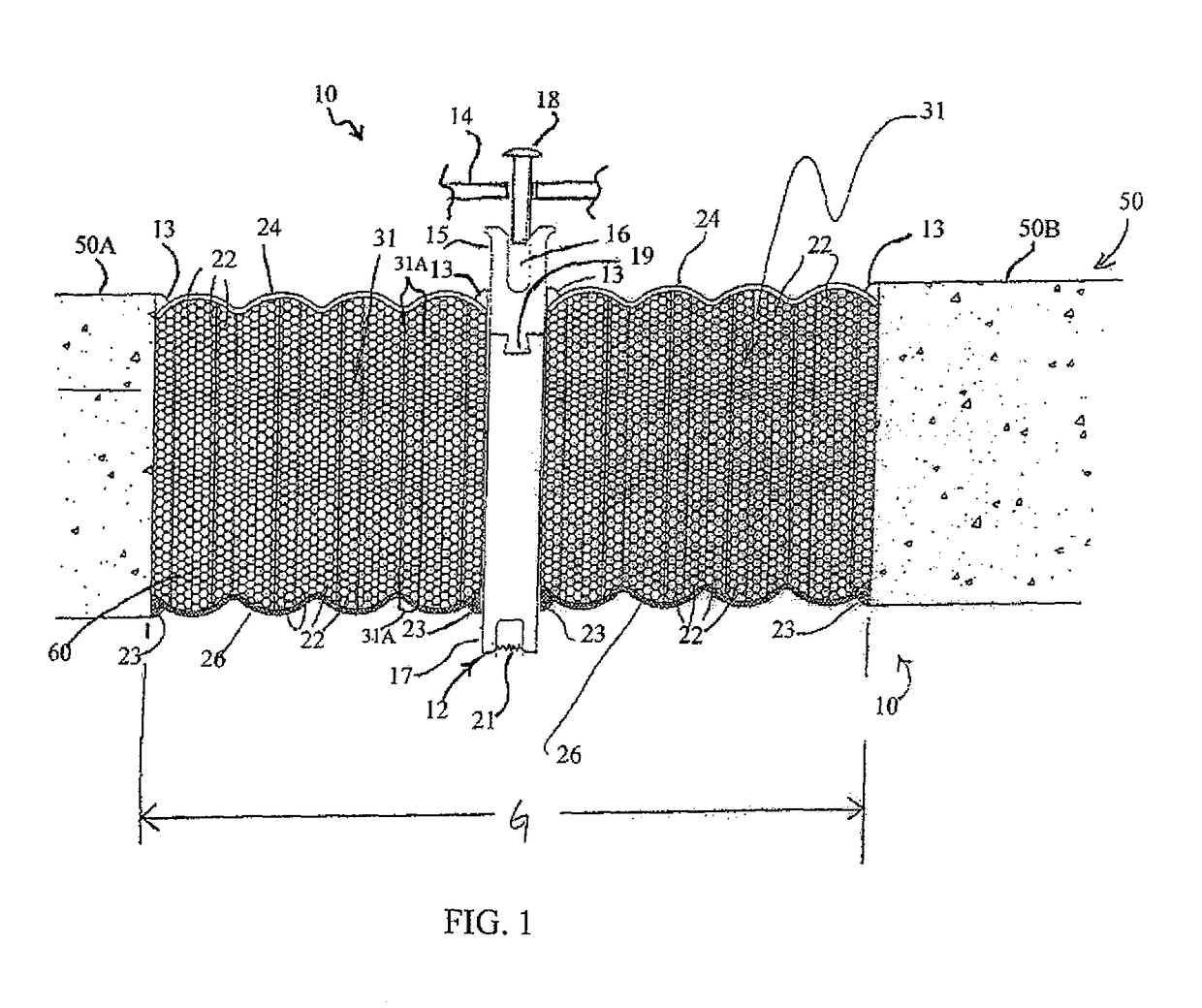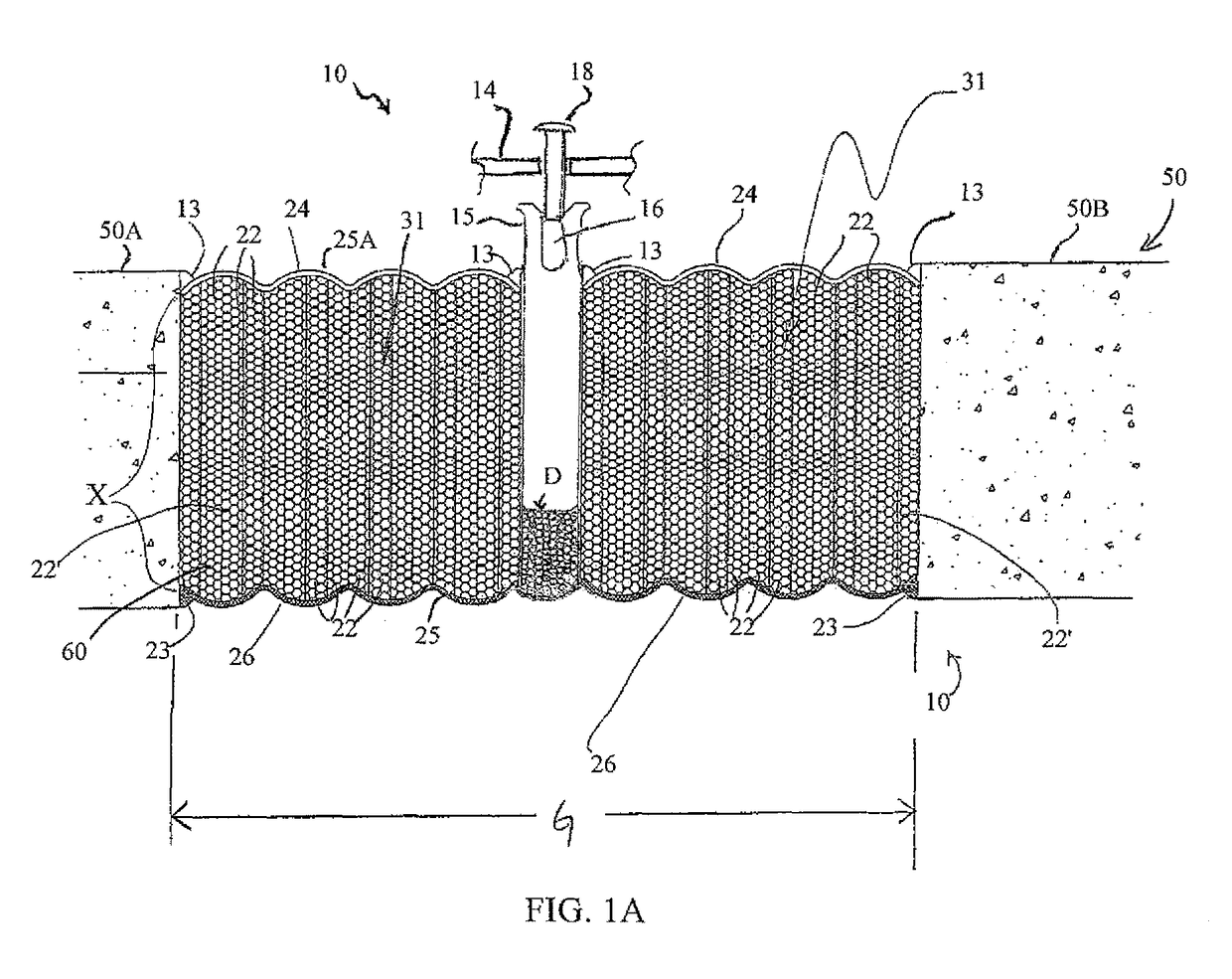Fire and water resistant expansion and seismic joint system
a seismic joint and expansion technology, applied in the field of joint systems, can solve the problems of subversion of fire resistive elements, deficiency of building joint systems in fire resistance, and pedestrian traffic to internal horizontal joints
- Summary
- Abstract
- Description
- Claims
- Application Information
AI Technical Summary
Benefits of technology
Problems solved by technology
Method used
Image
Examples
Embodiment Construction
[0027]The expansion joint systems described herein can be understood by referring to the attached drawings and also to U.S. Pat. No. 6,532,708, which is incorporated by reference herein. One embodiment of an expansion joint system as described herein is installed between concrete substrates to define a concrete expansion joint system capable of accommodating movement of the concrete substrates due to thermal effects and / or seismic effects. The present invention is not limited in this regard, however, as the expansion joint system may be installed between substrates or surfaces other than concrete. Materials for such substrates or surfaces include, but are not limited to, glass, asphalt, stone (granite, marble, etc.), and the like. Furthermore, the expansion joint systems described herein are generally referred to as being horizontally oriented; however, the present invention is not limited in this regard, as the joint systems (with or without cover plates) can also be installed vert...
PUM
| Property | Measurement | Unit |
|---|---|---|
| temperature | aaaaa | aaaaa |
| density | aaaaa | aaaaa |
| temperature | aaaaa | aaaaa |
Abstract
Description
Claims
Application Information
 Login to View More
Login to View More - R&D
- Intellectual Property
- Life Sciences
- Materials
- Tech Scout
- Unparalleled Data Quality
- Higher Quality Content
- 60% Fewer Hallucinations
Browse by: Latest US Patents, China's latest patents, Technical Efficacy Thesaurus, Application Domain, Technology Topic, Popular Technical Reports.
© 2025 PatSnap. All rights reserved.Legal|Privacy policy|Modern Slavery Act Transparency Statement|Sitemap|About US| Contact US: help@patsnap.com



